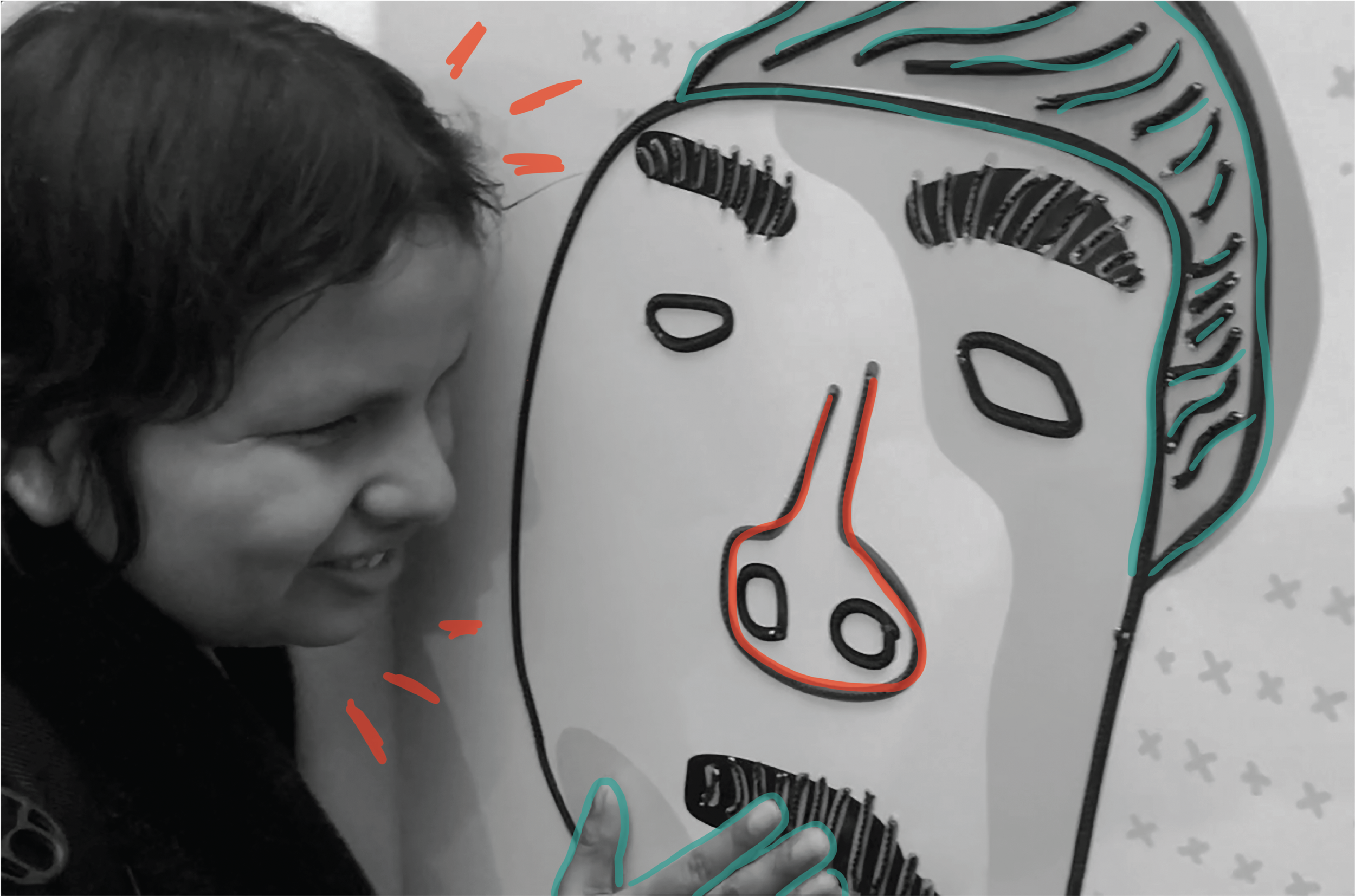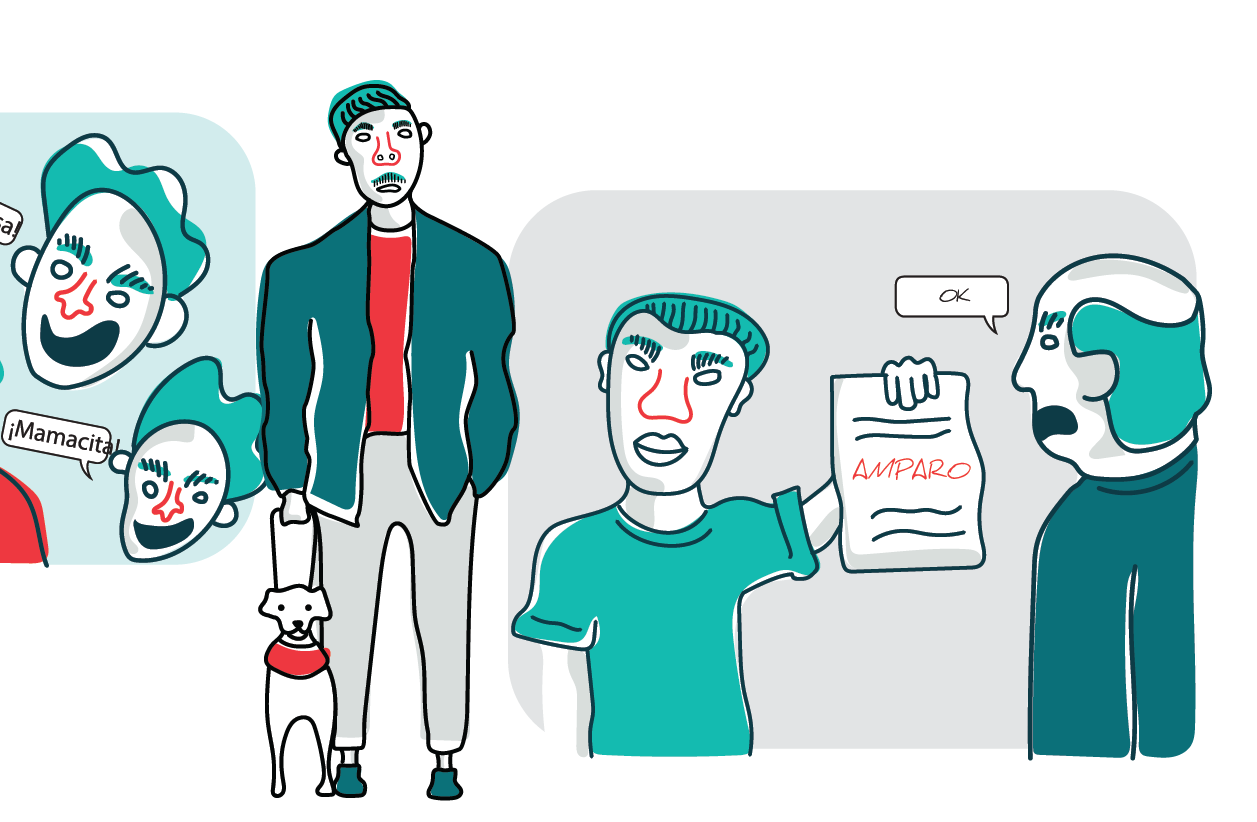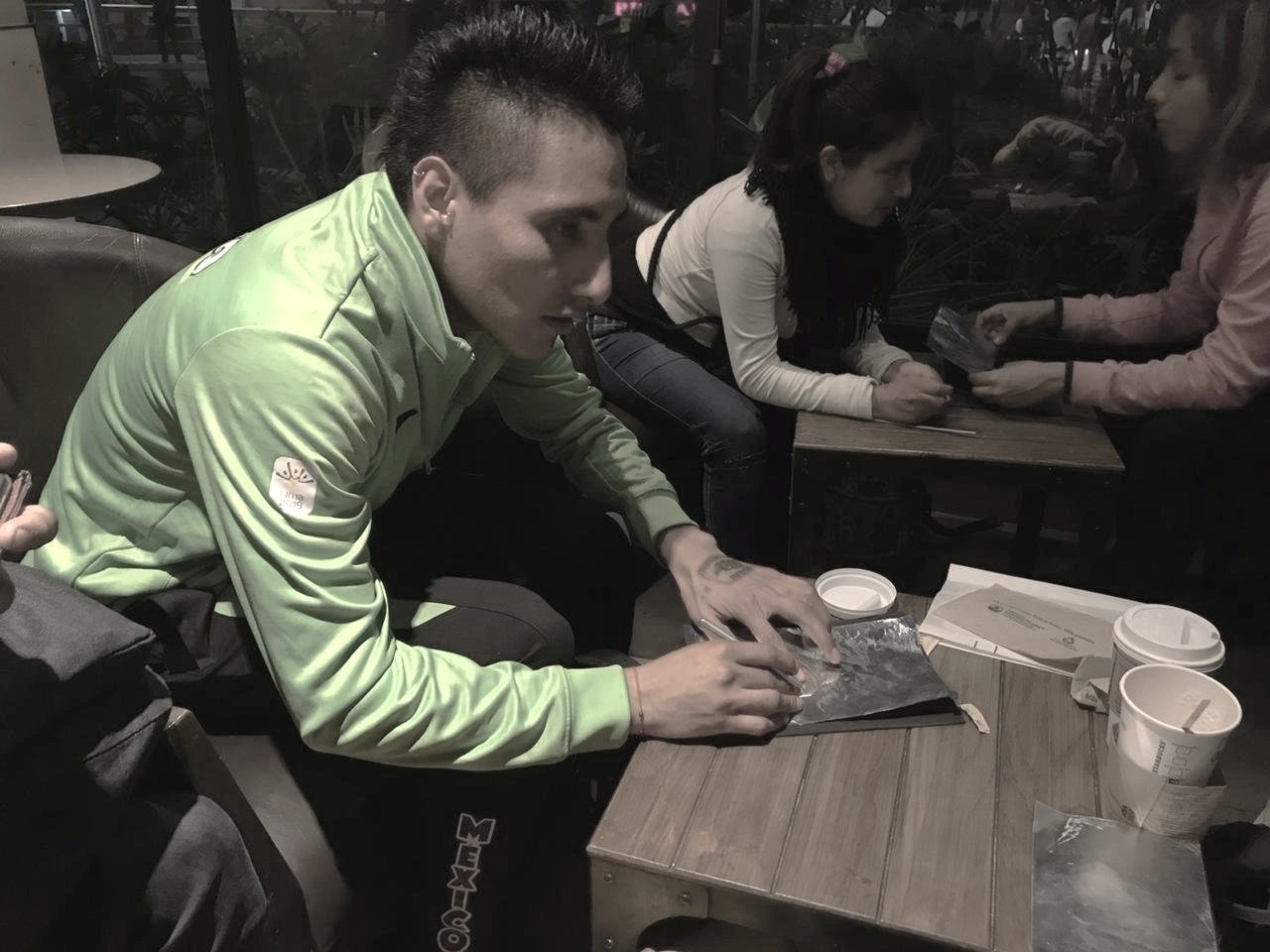DeFacto
CHALLENGE
In Mexico, persons with disabilities (PWD) suffer continuous violations of their basic human rights. The current legal framework is riddled with barriers—informational, operational, and attitudinal—that make it nearly impossible for PWD to access justice. These barriers prevent them from understanding their rights, taking independent legal action, and receiving fair treatment from authorities.
OUTCOME
DeFacto tackles this problem through different expressions of the design process that bridge two worlds: an inaccessible legal structure and people with sensory impairments. The design-led, co-created solution tackles these issues through:
A haptic exhibit to inform PWD about their rights.
A web platform that promotes autonomy in legal procedures through accessible design.
Workshops designed to challenge ingrained biases among public officials, facilitated by visually impaired individuals.
Role: Project Integration Lead, Strategy Lead, Front-end Designer, Branding.
-
Sep ‘19 - Sep ‘20
12 months
-
Jerónimo Toledo
David A. Martínez
Olín Ibarra
-
National Design Biennale
✨National Design Award granted by the United Nations: Best Design Project that contributes to achieving Global Development Goals: Promotion of peaceful and inclusive societies. / (Diseña México, 2020)
✨ National Design Biennale “Diseña México”: Honorable Mentions in Best Thesis and Best Visual Communication.
✨ This project is now part of the resources provided by the Mexican National Commission of Human Rights (CNDH), contributing to the protection and promotion of PWD rights.
System Map Infographic of the project, outlining design barriers and solutions.
DESIGN RESEARCH
UNDERSTANDING THE PROBLEM SPACE
The research phase for DeFacto was extensive and deeply immersive, focusing on understanding the legal and societal challenges faced by persons with disabilities (PWD), particularly the blind and hearing-impaired communities. To better understand the broader needs of the blind community, the team conducted site visits to key institutions such as the Vasconcelos Library and La Biblioteca Nacional, both known for their accessible facilities for the blind. Engaging with users at these sites gave the team firsthand insights into the everyday barriers and challenges experienced by visually impaired individuals. This groundwork was essential in shaping the design approach to ensure accessibility and autonomy. A pivotal moment in the research came when Alejandro, a blind Mexican Paralympian champion, shared his experience.
After being robbed and beaten while singing on the subway to earn money for his training, he sought justice but was told by the police:
“You cannot testify. Your testimony is useless if you cannot identify the person who robbed you… and well, you are blind.”
This dismissal highlighted the severe attitudinal and legal barriers that PWD face when interacting with the justice system. Alejandro’s story was not an isolated case—many others in the community faced similar dismissive or discriminatory attitudes from legal authorities.
It was evident that the community suffered from various abuses, but the team decided to focus the project specifically on access to justice for persons with impairments. This decision was based on the understanding that while many issues needed to be addressed, enabling autonomy in the legal process could have the most immediate and lasting impact.
During this phase, the team also began a deep dive into Mexican penal law to identify gaps in how PWD are treated by the legal system. At the same time, team members took Braille and Mexican Sign Language (MSL) classes to ensure they could communicate more effectively with the communities they were serving. This step also allowed the design process to be more inclusive and informed, ensuring that solutions were not just theoretically accessible, but also practically useful to PWD.
Under normal circumstances, only 0.27% of crimes in Mexico go to trial. This percentage is virtually nonexistent if the victim has a disability.
GATHERING DATA
One of the major challenges in this phase of research was determining which crimes were commonly committed against PWD and whether different disabilities were linked to specific vulnerabilities. However, the data on crimes against PWD was extremely scarce. Reporting was consistently low, and in sensitive cases such as sexual harassment, the perpetrator was often the caregiver, which meant the crime often went unreported since the victim depended on the caregiver for daily assistance.
To understand the relationship between disabilities and crime, the team filed a petition for transparency with the government, requesting data on crimes linked to different disabilities. The response highlighted a systemic issue: if a crime was reported, there was no structured way to indicate that the victim had a disability. The current system required victims to write about their disability in free-form text fields, without any checkboxes or standard formats that would allow for the easy collection and analysis of such data.
To circumvent this issue, the team accessed records from the National Human Rights Commission (CNDH). Publicly available information helped identify the most common crimes committed against PWD, how they were reported, the responsible authorities, and the corresponding legal instruments in place.
INSIGHT PRIORITIZATION
After identifying the problem space and narrowing the focus to access to justice for persons with disabilities (PWD), the team followed an iterative design process using qualitative research techniques.
One of the primary methods employed was the AEIOU framework—a research tool that examines Actions, Environments, Interactions, Objects, and Users to understand the complete context in which the target community operates.
Actions: Observing the behaviors of PWD in relation to legal processes and how they navigate the justice system.
Environment: Examining the physical and digital spaces where legal interactions occur and identifying accessibility barriers.
Interactions: Understanding the exchanges between PWD, legal professionals, caregivers, and public officials.
Objects: Analyzing the tools, documents, and devices PWD use to access legal support.
Users: Studying the experiences, challenges, and needs of PWD as they attempt to assert their rights.
Through this method, we discovered insights that were classified into three key categories:
Informational Barriers: Many PWD did not understand their legal rights or the resources available to them.
Operational Barriers: The legal process lacked tools to empower PWD to navigate independently.
Attitudinal Barriers: Government officials often treated PWD dismissively, lacking empathy and understanding of disability rights.
AD HOC LEGAL STRATEGIES
With this information in hand, the team collaborated with legal experts to create legal strategy templates for three of the most commonly reported crimes against PWD. These templates were designed to empower users by offering autonomy in legal procedures. Each template provided pre-designed legal strategies, allowing users to file reports or take legal action independently, without having to rely on potentially biased or unavailable legal assistance.
This structured approach not only streamlined the legal process for PWD but also made it more accessible, breaking down the informational barriers that had previously prevented them from understanding and asserting their rights.
DESIGN SOLUTION
Through participatory action research, DeFacto emerged as an integral co-design solution to facilitate access to justice for hearing and visually impaired persons in Mexico City. The system is built around the guiding principles of autonomy and independence, ensuring that these concepts drive the entire design approach.
This research process was then translated into a systemic design solution with three interconnected elements:
A Haptic-Graphic Traveling Exhibit




This exhibit highlights the normalization of crimes, abuses, and violations against persons with disabilities (PWD) while providing information about the legal resources available to defend themselves. By making these issues visible, the exhibit aims to raise awareness and inform PWD of their rights in an accessible way, using both graphic and tactile elements to ensure inclusivity. Two examples of this are the comic and audio design.
COMIC DESIGN
Why not simply use subtitles to address the deaf population? Contrary to common belief, Mexican Sign Language (MSL) and Spanish are quite different. Not addressing the deaf community in their native language is like asking them to understand important information in a second language. Due to high levels of illiteracy among people with hearing impairments in Mexico, comics offered a more accessible learning method. Since many deaf individuals prefer MSL over Spanish, these comics were designed to follow MSL grammar. We dedicated time to understanding how our users perceive the world and developed comics that aligned with their language and experience.
AUDIO DESIGN
Colors, bold fonts, and bullet points were transformed into distinct voices, sound emphasis, and tone scales. Native elements of graphic design were translated into audible components to create short audio capsules. This allowed each piece of information to be conveyed in three different ways: comics in MSL, hapto-graphic elements, and audio capsules.
II. Accessible legal aid e-platform
The platform promotes user autonomy by streamlining the operational aspects of various legal procedures. It simplifies the use and drafting of legal documents, offering pre-designed legal strategies that can be autopopulated through simple questions, downloaded, and sent directly to a judge. In this platform, users can also access a pre-fabricated e-legal buddy, enabling anyone to generate complex legal instruments simply by answering a series of questions and following a step-by-step process. This tool is crucial in empowering people with disabilities (PWD) to take legal action independently, overcoming the operational barriers that previously limited their access to justice.
INVERTING THE PROCESS
To achieve this, the design process was reversed: instead of starting with the visual muck up of the interface, the team first developed a blind-friendly HTML code, ensuring the platform could be navigated easily by screen readers. Only when we had a blind-friendly script for the platform, validated by blind users, was the visual design developed. The platform also includes poetic descriptions via Alt-Text, adding a layer of emotional engagement for blind users. The final tool, called “Arma tu...”, simplifies complex legal document preparation through a step-by-step questionnaire, empowering users to complete legal tasks independently.
III. Workshops for Public Officials
These workshops are designed to raise awareness among public servants about disability rights and human rights, with a focus on empathy. The workshops are structured to be delivered by a visually impaired facilitator, ensuring that the training itself is an example of inclusion. By educating public officials, the workshops address the attitudinal barriers in the legal system, promoting more respectful and effective treatment of PWD in legal matters. The materials include an audio manual, hapto-graphic formats, and interactive exercises to ensure participants fully engage with the content. These workshops are now part of the resources offered by the Independent Disability Mechanism at CNDH.
IV. Graphic Identity
DeFacto does not have a traditional graphic identity; instead, it uses a hapto-graphic identity—a combination of tactile and visual design. This approach was crucial to ensure accessibility for blind users. The identity emerged from a co-design process with visually impaired individuals. In drawing workshops, blind users created self-portraits on thin sheets of metal, allowing them to feel the relief of the features they added.
From left to right: First workshop’s results: Unrefined self-portrait; first evaluation and refinement process; final evaluation of the hapto-graphic result; end result of the haptographic identity.
These portraits, free from visual concepts like perspective, shading, or abstraction, were refined into designs that could be understood by both blind and sighted users. These visual-tactile elements form the foundation of DeFacto’s communication strategy, ensuring a universally accessible and inclusive graphic identity.



















